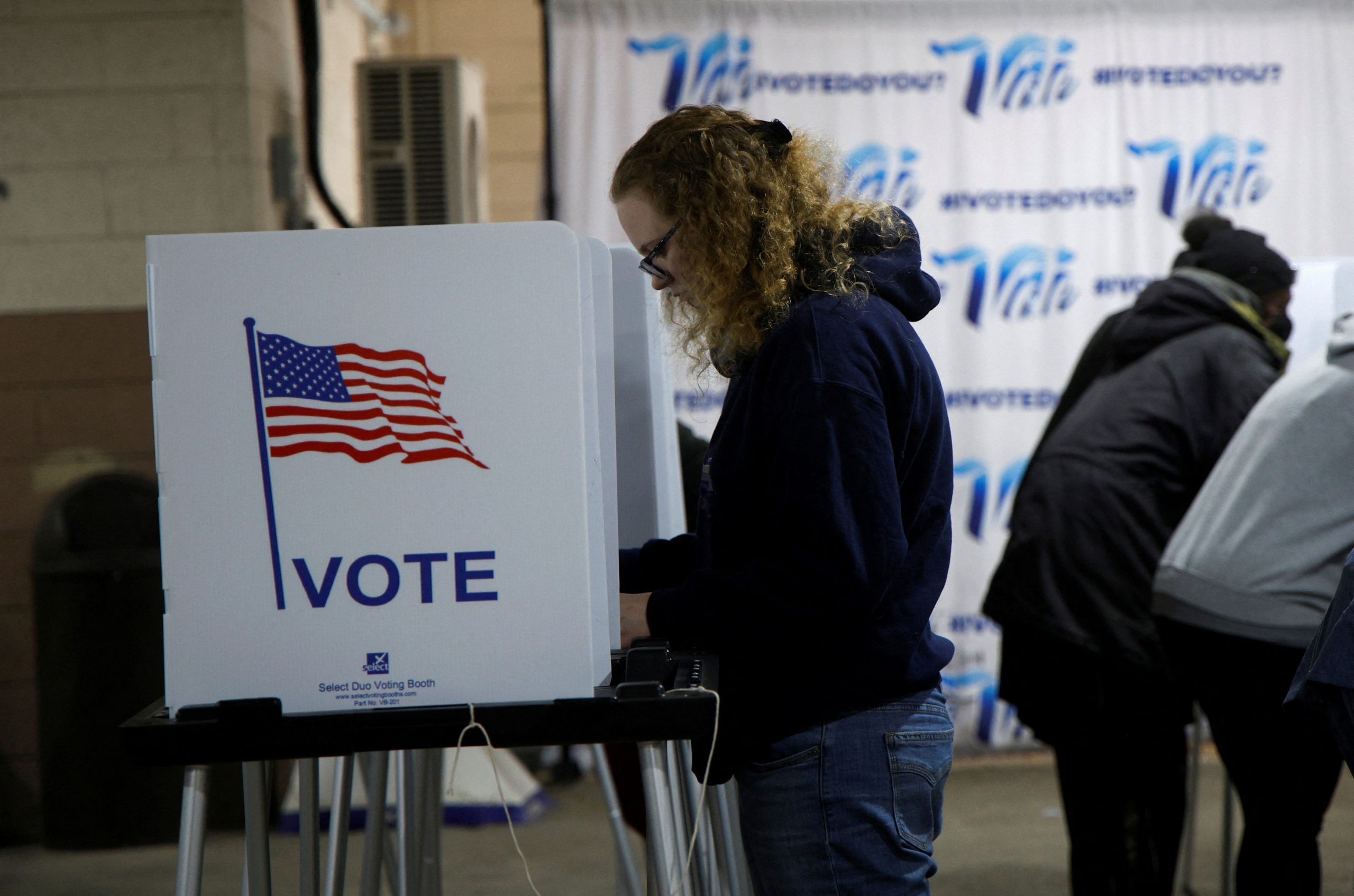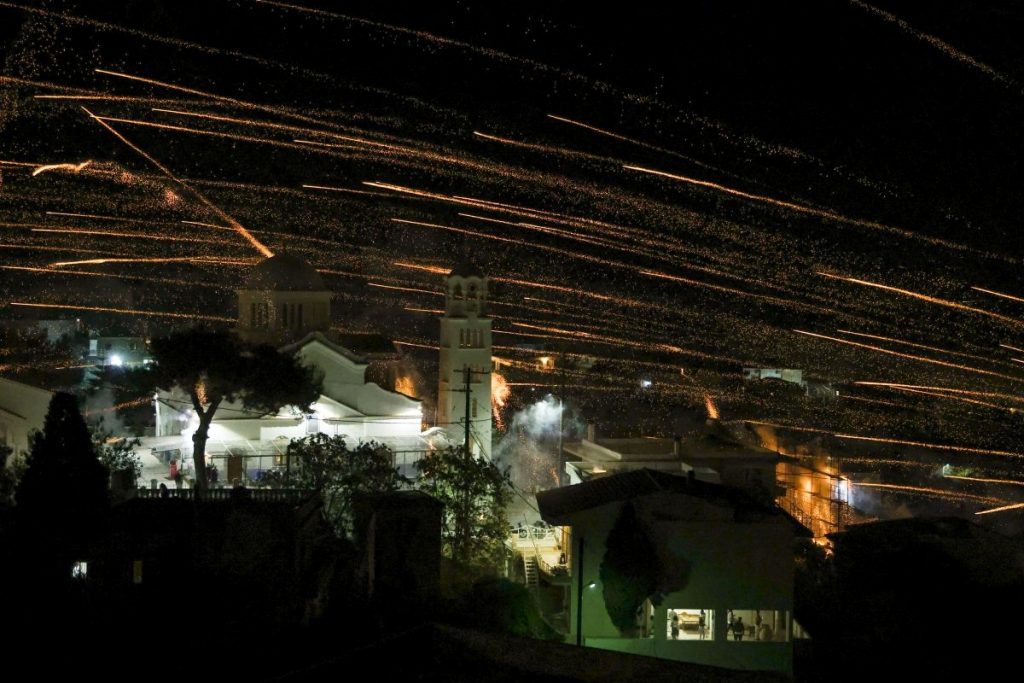We made it. Election night is finally here. Now what?
People are dying to know: Who will win? How can I sound smart in the group chat? Did the French Whale win millions? What time can I go to bed?
The beauty/agony of election night is that polls close nine different times, depending on the state. So there will be waves of information, starting at 7 p.m. Eastern time and then building up to 1 a.m., when the polls finally close in Adak, Alaska.
A presidential candidate needs to secure 270 Electoral College votes to win. Those votes will come in bunches after long, nerve-racking intermissions.
If you want to know what to watch for as the votes roll in, here’s a guide. (Hint, the real fun starts after midnight).
Dixville Notch, N.H.
Election Day is packed with traditions. And the first tradition was the six registered voters in Dixville Notch, N.H., voting together at midnight—with Kamala Harris and Donald Trump each getting three votes. Will that tip the scales one way or the other? Probably not. But it is a fun story each year, and it means the tea-leaf reading has officially begun!
In January, during the Republican primary, all six Dixville Notch votes went to Nikki Haley . While the latest result might offer a sense of the direction some people feel pulled in, it’s six votes out of probably more than 160 million, so… the day is young.
7 p.m. ET—Georgia, Indiana, Kentucky, South Carolina, Vermont, Virginia
Like in any good suspense thriller, the action starts immediately. Polls close in six states right off the bat, including GEORGIA! Virginia is also a key state in this group, as Trump campaigned there on Saturday, seeking to flip it red. In 2020, the Associated Press called Virginia for Democrats just 36 minutes after polls closed. So if Trump has made it more competitive, we should know quickly.
Virginia tends to follow a predictable script. The Republican begins with a big lead and then Democratic votes start snowballing later in the evening, particularly from places such as Fairfax County in Northern Virginia. Georgia could take several more hours to determine, but it might be the best bellwether of the night.
This will be the first reminder for the evening that just because the polls close in a state doesn’t mean we will instantly know how people voted in that state. The votes have to be counted. Close races take longer.
7:30 p.m. ET — North Carolina, Ohio, West Virginia
Just 30 minutes later, three more states close, each of which is important in its own way.
North Carolina is another major swing state. Trump has won it twice, but he has been campaigning aggressively in it over the past few days in an attempt to prevent Harris from pulling it into her column. If North Carolina flips blue, Trump has major problems.
The presidential race isn’t considered particularly competitive in Ohio, though some polls have shown it to be narrower than some Republicans would like. But the Senate race there is incredibly close, as incumbent Democrat Sherrod Brown is attempting to fend off Republican Bernie Moreno . This race could help flip the entire Senate toward Republicans. Brown tends to poll better than Harris in Ohio, but if he starts out in a huge hole, he could be in trouble.
In West Virginia, Republican Jim Justice is expected to win that open Senate seat (the one retiring Sen. Joe Manchin is vacating). That race will likely be called very early in the night.
8 p.m. ET—Alabama, Connecticut, Delaware, District of Columbia, Florida, Illinois, Maine, Maryland, Massachusetts, Mississippi, Missouri, New Hampshire, New Jersey, Oklahoma, Pennsylvania, Rhode Island, Tennessee
This is when the parties start! Literally.
Harris’s election night party begins at Howard University in Washington around this time.
Trump has two parties launching simultaneously in Florida. One will be at a convention center in West Palm Palm Beach called “Election Night Watch Party” and another, for top donors, will be at Mar-a-Lago called “Election Night Celebration.”
This is also when the electoral votes can start piling up.
The polls close in 17 locations (16 states plus D.C.) during this hour, which means the fuller picture should start coming into focus. Probably the most important state in this batch is Pennsylvania, which both candidates have been treating as if it is the most important state in the country. We won’t know the winner of Pennsylvania in the next few hours (it is debatable whether we will know the winner anytime on Tuesday or Wednesday), but Pennsylvania and its 19 electoral votes could determine the whole race.
Also of note in Pennsylvania is the incredibly tight Senate battle between incumbent Democrat Bob Casey and Republican David McCormick . If McCormick is victorious, that could portend good news for Trump.
A reminder: Florida used to be a swing state (remember 2000? And former President Barack Obama won it in 2008). But it is far from one now. Republicans have had great success in Florida in recent years. In fact, Texas is more purple than Florida these days.
8:30 p.m. ET—Arkansas
Arkansas is the only state where polls close during this slot, and Trump is expected to win it easily. But what is important about this window is that we will have a better sense of the direction things might be headed in places like Georgia and North Carolina.
9 p.m. ET—Arizona, Colorado, Iowa, Kansas, Louisiana, Michigan, Minnesota, Nebraska, New Mexico, New York, North Dakota, South Dakota, Texas, Wisconsin, Wyoming
This is the last big window when a large number of locations (15 states) will close their polls at once, including the battlegrounds of Arizona, Michigan, and Wisconsin. So at this point, the only swing state that will still be open is Nevada.
Plot twist! The polls also close at 9 p.m. in Iowa, which wasn’t drawing much interest until a shocking poll published Saturday night in the Des Moines Register showed Harris ahead.
This is also when polls close in Texas. The presidential race there isn’t expected to be competitive (Democrats still dream that it will be before too long), but Republican Sen. Ted Cruz is in a tough re-election race against Democratic Rep. Colin Allred . The longer this race takes to call, the closer Allred has made it. Texas hasn’t had a Democratic senator since 1993.
10 p.m. ET—Montana, Nevada, Utah
By this point, you are getting sleepy, tipsy or slipsy, and there are numbers flying all over the place. This is also when votes can start piling up in cities, such as Milwaukee, Philadelphia, and Detroit, dramatically eating away at margins that Republicans build up in more rural areas. That is why it is important to watch what percent of each state and county has reported their tallies. The votes in large metropolitan areas tend to come in later, and in huge batches, which can help Democrats as the night goes on. It is unclear if this will be the case in 2024, as there has been so much early voting. We shall see.
Two big story lines to watch in the 10 p.m. hour: Nevada is the final swing state to close its polls, and it is one of the slowest to tally votes (it accepts votes by mail even after Election Day). In 2020, Nevada was one of the last states to be certified by the AP, on the Saturday afternoon after the election, the same day as Pennsylvania. North Carolina and Georgia were called days later.
We will likely know early in the night who won Montana, however, as polls show Trump with a really comfortable lead. But it is the Senate race there that has everyone watching. Democratic Sen. Jon Tester appears to be at serious risk of losing his seat to Republican Tim Sheehy . If Democrats were able to hold off Republican challengers in Ohio, Pennsylvania, and elsewhere, Montana is the place where Republicans could finally seize Senate control.
During this window, polls in Georgia and North Carolina will have been closed for a couple of hours. If Trump or Harris is going to win either of these states decisively, which is possible, this is when we might have a sense.
11 p.m. ET—California, Idaho, Oregon, Washington
By this point, half (or more!) of the country is asleep. The other half is frantically googling things like “How long does it take to count votes in Fulton County?”
Just four states close polls during this window, none of which should be that close. California has several tight House races that will help decide control of that chamber, but the state typically takes days to count all its votes.
12 a.m. ET—Hawaii
There are years when Hawaii closes its polls at midnight and the country already knows who won the election. It can be a bit anticlimactic in the Aloha State, but…you never know. In a close election year, Democrats are counting on Hawaii’s four electoral votes.
But it is in this window when the vote tallies in all the other states really build into a critical mass.
In 2020, between midnight and 3 a.m., the AP declared the winners of Minnesota, Ohio, Iowa, Florida, and Arizona. It was that Arizona call that really defined the entire election night.
1 a.m. ET—Alaska
Most polls in Alaska close at midnight, but they remain open for an additional hour in Adak, the westernmost part of the U.S. There are very few voters in Adak, and the state’s three electoral votes are considered safe for Trump.
So here’s the conundrum. If there are races that are incredibly close, it is possible that those calls drag well into Wednesday afternoon, or beyond. In 2020, the winner of Wisconsin and Michigan wasn’t called until much later on Wednesday. So there is a chance you’ve stayed up and pulled an all-nighter just to collapse, get three hours of sleep, and force yourself to constantly refresh your phone again and again. A reminder, it was at 2:30 a.m. after Election Day in 2020 when Trump declared victory, even though several key states hadn’t been called, and he ended up losing to Joe Biden .
Write to Damian Paletta at Damian.Paletta@wsj.com



